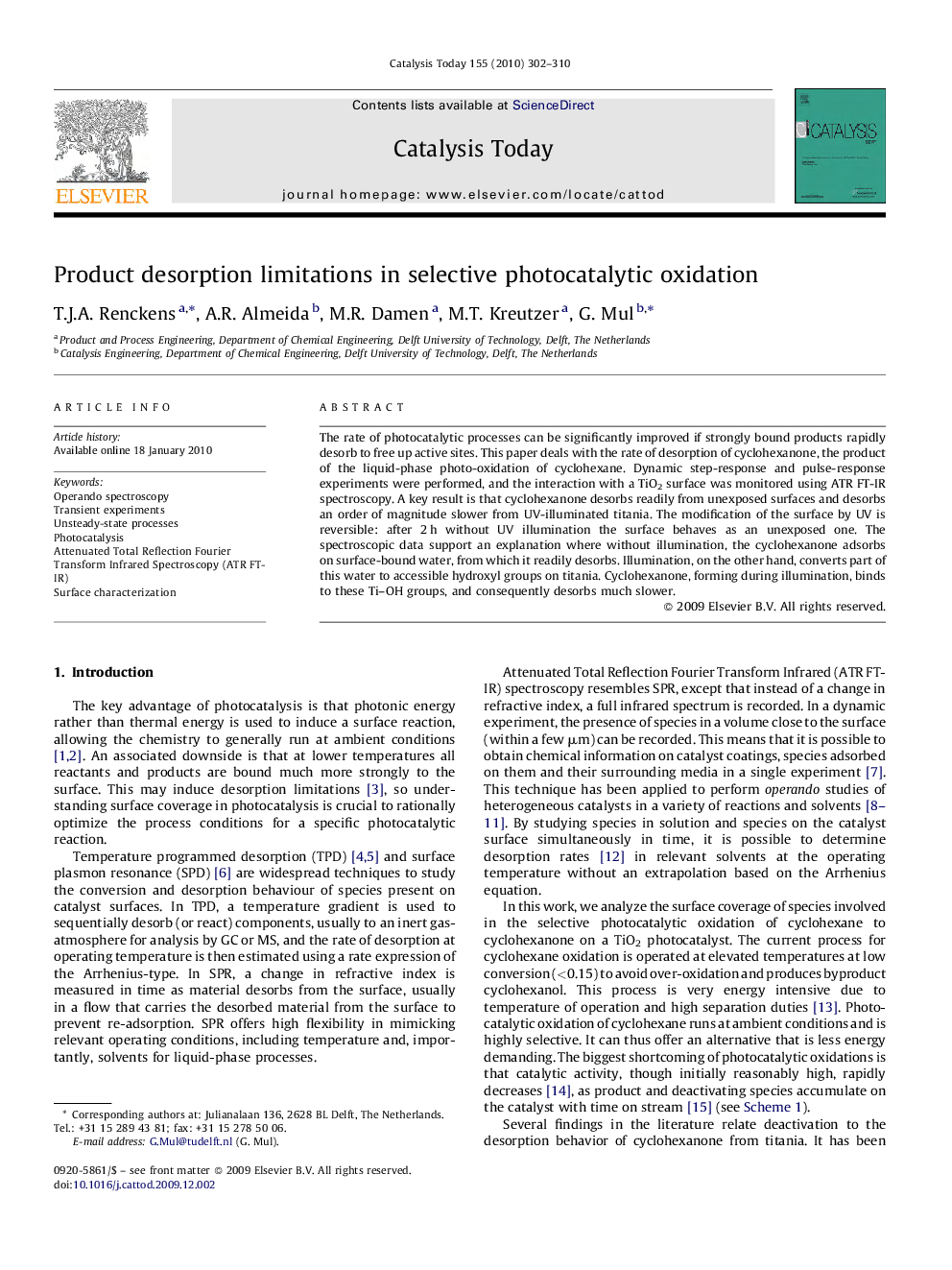| Article ID | Journal | Published Year | Pages | File Type |
|---|---|---|---|---|
| 56179 | Catalysis Today | 2010 | 9 Pages |
The rate of photocatalytic processes can be significantly improved if strongly bound products rapidly desorb to free up active sites. This paper deals with the rate of desorption of cyclohexanone, the product of the liquid-phase photo-oxidation of cyclohexane. Dynamic step-response and pulse-response experiments were performed, and the interaction with a TiO2 surface was monitored using ATR FT-IR spectroscopy. A key result is that cyclohexanone desorbs readily from unexposed surfaces and desorbs an order of magnitude slower from UV-illuminated titania. The modification of the surface by UV is reversible: after 2 h without UV illumination the surface behaves as an unexposed one. The spectroscopic data support an explanation where without illumination, the cyclohexanone adsorbs on surface-bound water, from which it readily desorbs. Illumination, on the other hand, converts part of this water to accessible hydroxyl groups on titania. Cyclohexanone, forming during illumination, binds to these Ti–OH groups, and consequently desorbs much slower.
